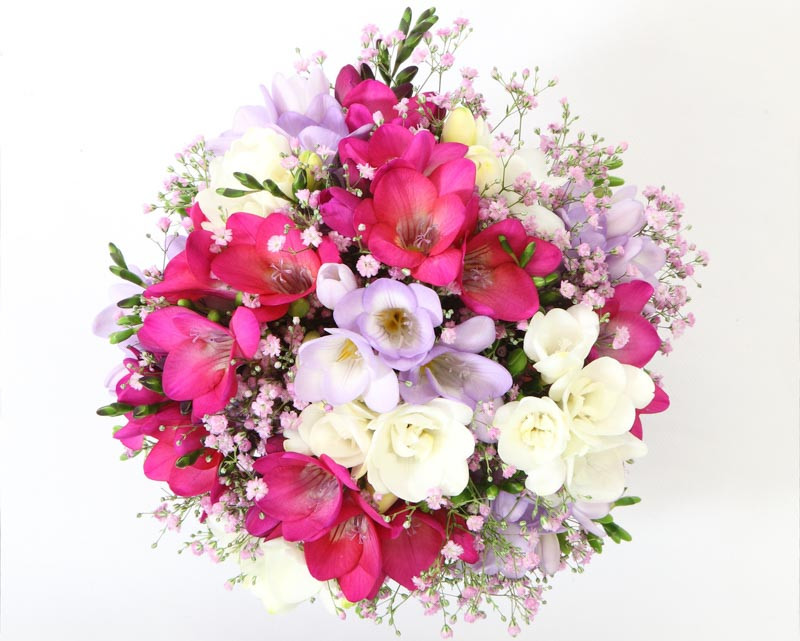Freesia
Freesia is a bulbous perennial cherished for its zesty fragrance and graceful appearance. It grows from a corm, which sends up sword-like, narrow leaves and branching stems. These plants typically form a clump and have a somewhat airy, upright growth habit, making them perfect for cutting gardens.
Hardiness: Freesias are hardy in USDA zones 9-10. In cooler climates, they are often grown as annuals, or the corms are lifted and stored over winter to protect them from frost. These plants prefer mild, frost-free climates and thrive in well-drained soil with ample sunlight.
Flowers and Bloom Time: The enchantment of Freesia primarily stems from its captivating flowers. Each stem flourishes with a one-sided raceme, blossoming into single or double flowers. These blooms are celebrated for their vivid colors. Freesia’s standout feature is its intensely sweet, long-lasting fragrance, making it a favored choice for perfumery and aromatic products. In regions where Freesia is winter hardy, it is ideally planted in the fall. Conversely, in cooler climates, planting Freesia from spring to early summer ensures a delightful display of summer and fall blooms. For indoor enjoyment, planting Freesia in fall can bring a burst of color and scent during the late winter to early spring months.
Uses: Freesias are a favorite in floral arrangements and bouquets due to their long vase life (up to 3 weeks) and enchanting scent. They also add color and fragrance to borders, beds, and containers. Their natural fragrance is often extracted for use in perfumes, oils, and aromatherapy products.
Benefits: Freesias attract bees and butterflies, contributing to garden pollination. They require minimal care once established.

